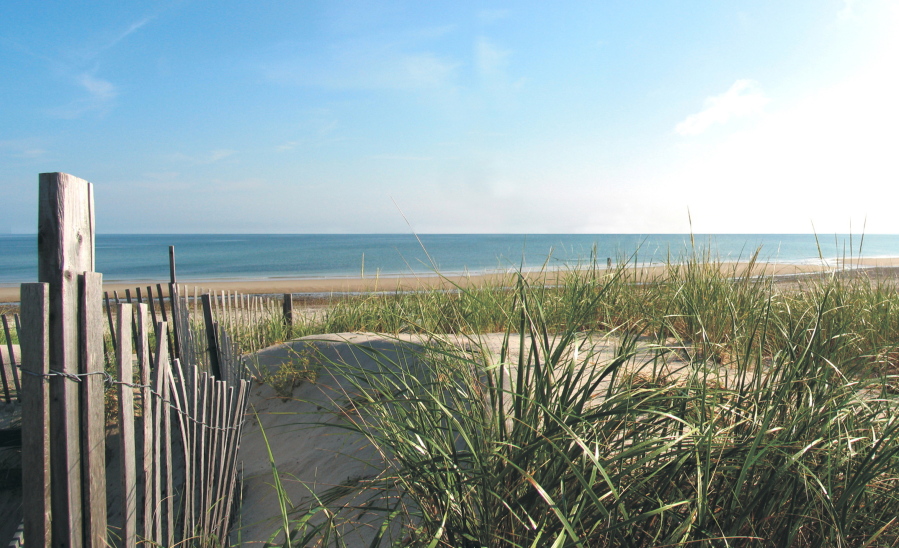HONOLULU — When you come upon an ocean bay that has features known as “Toilet Bowl” and “Witch’s Brew,” you may not envision a welcoming tropical oasis. But Hawaii’s Hanauma Bay, nestled inside a breeched volcanic cone on the southeastern shore of Oahu, has some of the state’s calmest waters, most pristine beaches and world-renowned snorkeling over coral reefs that teem with colorful fish.
For the second year in a row, a beach in Hawaii has been selected as the best beach in America by a Florida professor who’s made a career ranking and studying beaches around the country. This year’s top spot goes to Hanauma Bay, a picturesque nature reserve with gin-clear, turquoise water and abundant sea life.
Florida International University professor Stephen Leatherman, also known as Dr. Beach, uses about 50 criteria to assess and rank beaches across the country. In recent years, he has given extra points to beaches that prohibit smoking, saying cigarette butts are not only environmentally damaging, but can ruin the experience for beachgoers. Safety and environmental management are other major factors, he said.
“It’s so safe and easy. A lot of times if you want to see those kinds of fish you’ve got to go offshore, you’ve got to go take a boat ride somewhere,” Leatherman told The Associated Press in a telephone interview last week. “I’ve never seen so many fish swimming around your feet.”
Other beaches that made the list this year, in order of ranking, are: Siesta Beach in Sarasota, Fla.; Kapalua Bay Beach in Maui, Hawaii; Ocracoke Lifeguarded Beach on the Outer Banks of North Carolina; Coast Guard Beach on Cape Cod, Mass.; Grayton Beach State Park in Florida; Coronado Beach in San Diego; Coopers Beach in Southampton, N.Y.; Caladesi Island State Park in Clearwater, Fla.; and Beachwalker Park on Kiawah Island, S.C.
Hanauma Bay became a marine life conservation area and underwater park in 1967. In 1990, local officials formulated a plan to better protect the area. All first-time visitors who come to the popular snorkeling spot are required to watch an informational video that teaches them about preservation and conservation, as well as the safety rules for the bay. It’s against the law to mistreat any marine life in the bay, and visitors are not allowed to touch or walk on the coral reefs.
Leatherman says Hanauma Bay was the first beach in the state to ban smoking because they found that fish were eating cigarette butts.
“We don’t really want these cigarette butts on the beaches anyway, because kids eat them, too,” Leatherman said. “They’re disgusting.”
Now all public beaches in Hawaii prohibit smoking, which helped give the edge to last year’s winner, Waimanalo Bay Beach Park on Oahu.
Now in his 25th year of ranking beaches, Leatherman has reset the list and allowed all beaches to be eligible for the top spot in 2016. Until now, any beach that won previously had been disqualified for another win, and Hanauma Bay won the honor about a decade ago, Leatherman said.
“It’s one of the most unique beaches in the world, there’s no doubt about that,” he said.
Safety is an important factor in Leatherman’s decision, noting that the water in Hanauma Bay is relatively shallow and calm and that you don’t have to go very far offshore to see the marine life. The park also has lifeguards posted across the beach and many signs warning visitors of the dangers that do exist.
The area is not without hazards, however. There have been 51 drowning deaths at Hanauma Bay since 1995.
Honolulu Emergency Services Department spokeswoman Shayne Enright told The Associated Press in a telephone interview Tuesday that inexperienced snorkelers often underestimate the dangers of swimming in the bay.
She said that there are some misconceptions that visitors have about snorkeling, especially that the activity is easy.
“If you don’t practice snorkeling, you will swallow water,” she said. “If you swallow a lot of water, you can actually paralyze your vocal cords and you’re unable to make any noise and panic sets in.”
Enright noted that while the waves rarely get very big in the bay, certain areas have very strong currents that can suck you out to sea. Areas known as “Witch’s Brew” and “Toilet Bowl” are both off-limits because of the strong currents, she said. There were about 650 rescues in 2015, ranging from people who were unresponsive in the water to those who simply needed some help getting back to shore.
Only four of the 51 drowning victims at Hanauma Bay since 1995 were Hawaii residents; 28 were from other countries and the remaining 19 were from out of state, according to the Hawaii Department of Health.
Yichuan Chiang, who has lived in Honolulu for about 45 years and comes to the park three times a week to swim laps in the “Keyhole” section of the bay, says the fish, scenery and warm water are the reasons he loves the beach so much.




